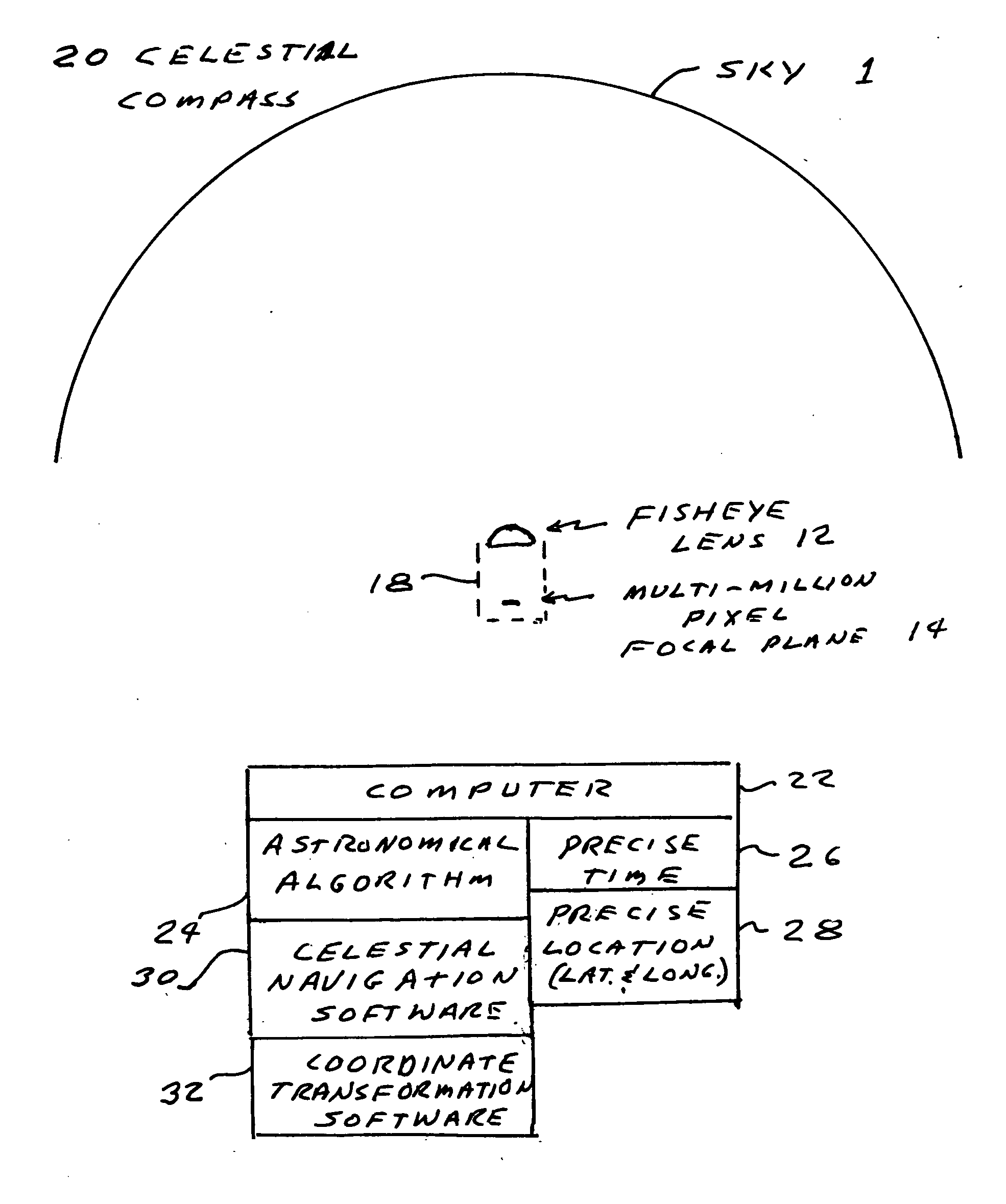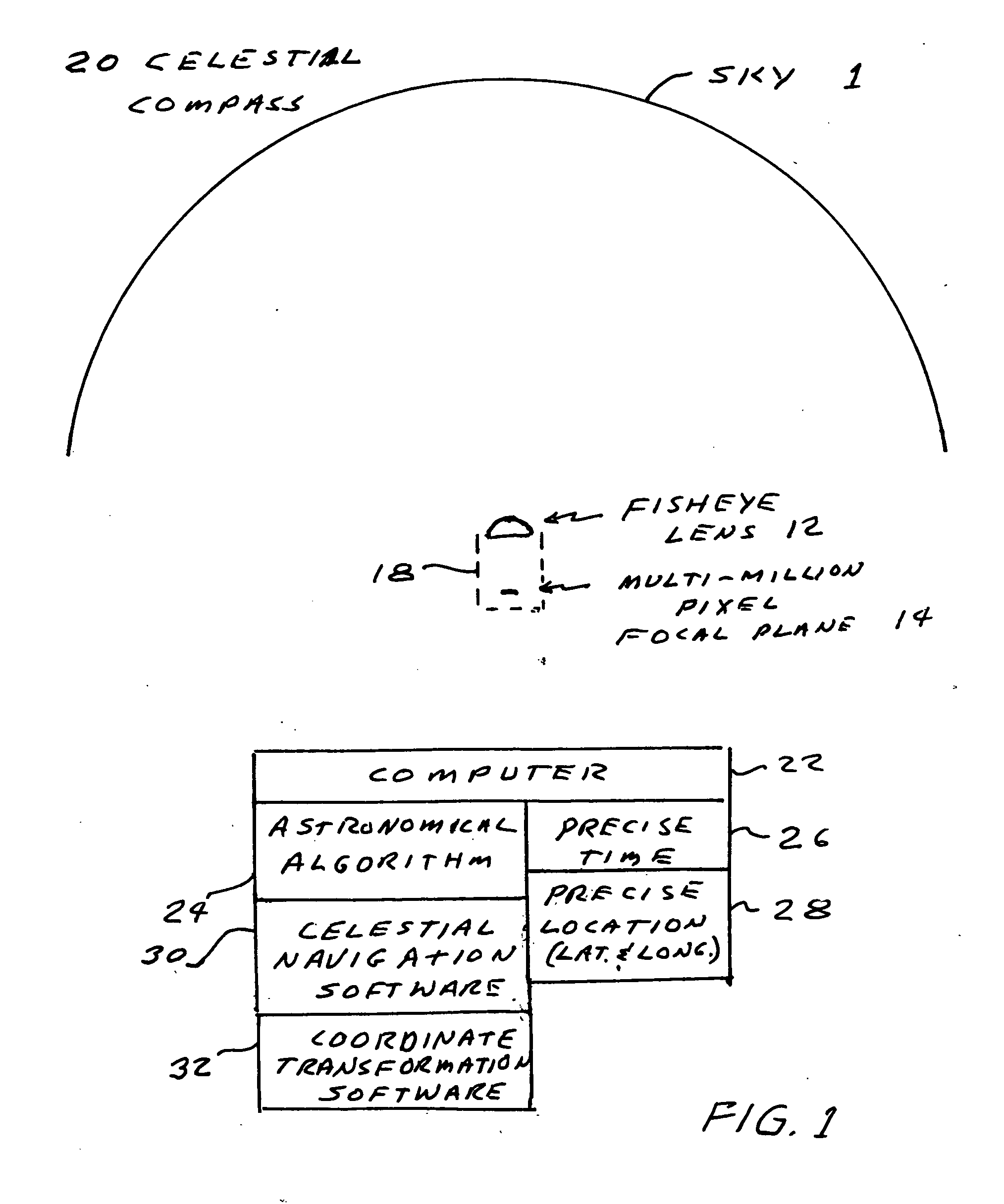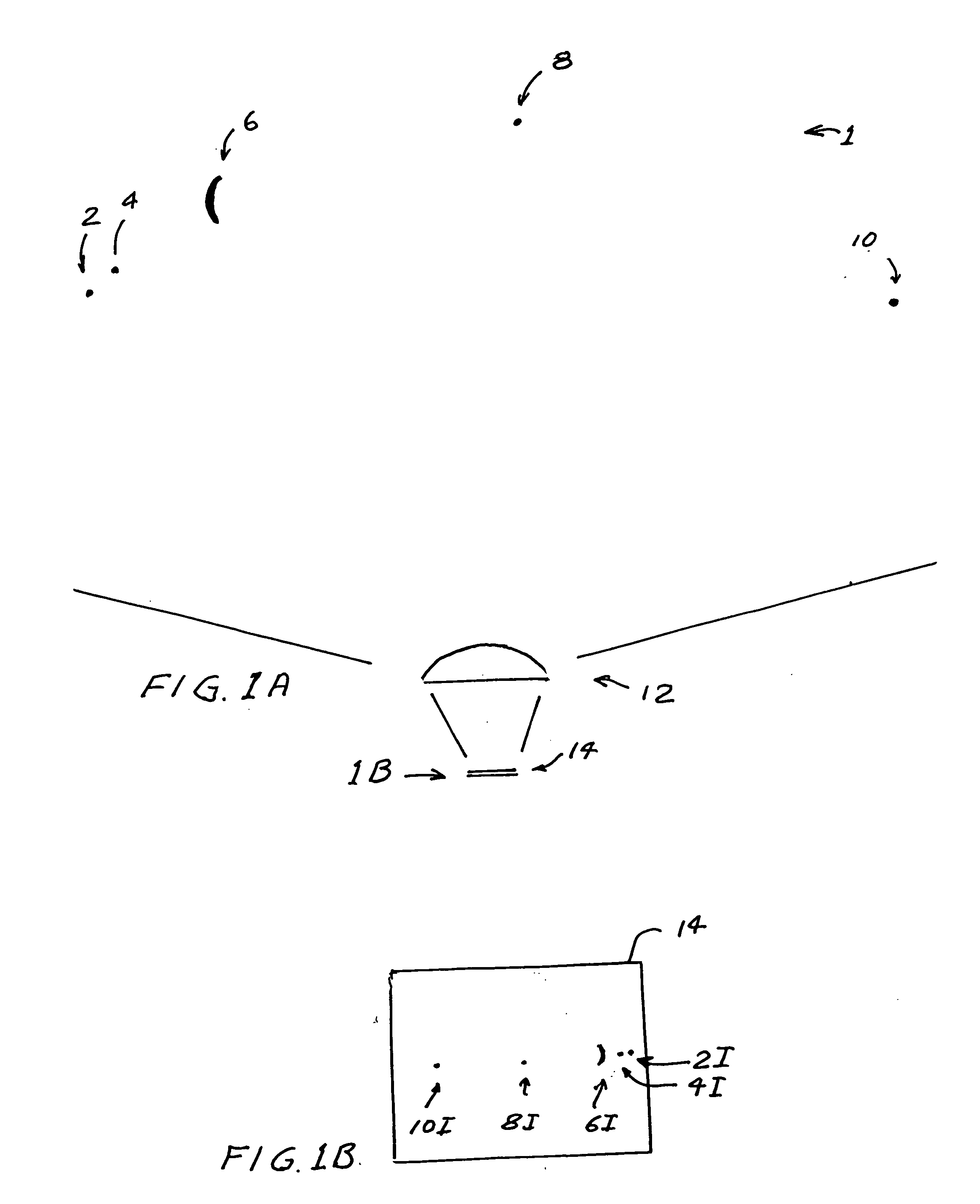Celestial compass
a technology of compass and telescope, applied in the field of compass, can solve the problems of limited azimuth precision and very high precision of celestial objects measurement, and achieve the effect of accurate determination of the azimuth of an instrument, high precision and easy identification
- Summary
- Abstract
- Description
- Claims
- Application Information
AI Technical Summary
Problems solved by technology
Method used
Image
Examples
first preferred embodiment
Location of Celestial Objects
The Celestial Compass
[0011] A first preferred embodiment of the present invention is shown in FIG. 1. It is a celestial compass and includes a camera 18 having a fisheye lens 12 suitable for viewing almost an entire hemisphere of the sky and a 6-million pixel sensor for collecting images of celestial objects such as stars, planets, the moon and the sun. The compass also includes a computer 22 programmed with an astronomical algorithm for providing the precise position of celestial objects based on precise input of time (date and time of day) and observation position (latitude and longitude), celestial navigation software 30 and coordinate transformation software 32 for converting pixel image data into astronomical coordinates. Also shown at 26 and 28 is the requirement for the precise time and location information.
The Camera
[0012] As shown in FIG. 1A about 170 degrees of a nighttime hemisphere 1 is viewed via a camera 18 with a fisheye lens 12 and ...
second preferred embodiment
Observation of Celestial Arcs
[0018] An alternate design uses the same wide angle lens and camera, but slightly different software. If the instrument is stationary for a period of time, for example a few minutes, then target identification is not required. The motion of any celestial target over a short period will describe an arc across the sky. The arcs that are directly North or South of the observer will be horizontal and parallel to the horizon, but travel in opposite directions. Arcs directly East or West will be vertical to some extent, depending on the observer's latitude. By calculating the arc's direction, the target does not need to be identified. This allows the instrument to calculate its orientation based on only a single unidentified star at night.
PUM
 Login to View More
Login to View More Abstract
Description
Claims
Application Information
 Login to View More
Login to View More - R&D
- Intellectual Property
- Life Sciences
- Materials
- Tech Scout
- Unparalleled Data Quality
- Higher Quality Content
- 60% Fewer Hallucinations
Browse by: Latest US Patents, China's latest patents, Technical Efficacy Thesaurus, Application Domain, Technology Topic, Popular Technical Reports.
© 2025 PatSnap. All rights reserved.Legal|Privacy policy|Modern Slavery Act Transparency Statement|Sitemap|About US| Contact US: help@patsnap.com



